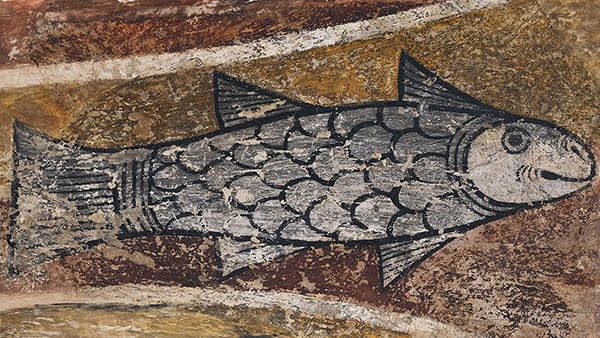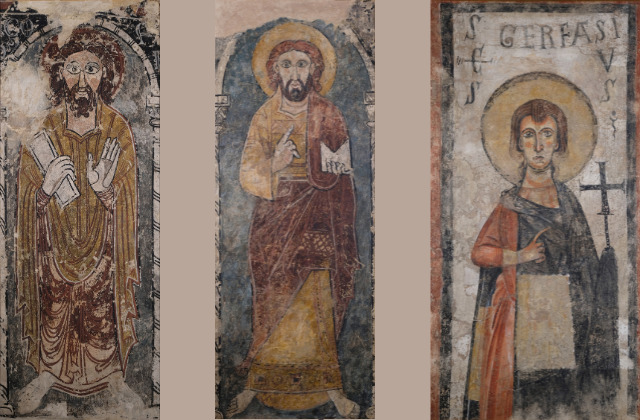Six lost Catalan Romanesque paintings found in Switzerland after fifty years
Two University of Barcelona researchers discover church panels in private collection

Six paintings that were originally church panels in the Catalan Pyrenees have been discovered in Switzerland.
Four of the Romanesque artworks had been missing for more than 50 years, while the other two were unknown to historians.
Professors Milagros Guardia and Juan Antonio Olañeta from the University of Barcelona's Ars Picta research group tracked the paintings down to a private collector who wished to remain anonymous.
Religious imagery
Romanesque art painted in the churches of the Pyrenees from the 11th to 13th centuries has a long history of being torn from the walls. Many pieces have been preserved and exhibited, such as the works that can be seen at the National Art Museum of Catalonia in Barcelona, while others have been sold to private collections around the world.
One of the pieces discovered in Switzerland shows an image of Saint Gervasius that was originally in the Church of Santa Maria de Cap d'Aran, in the Val d'Aran (Aran Valley). Many paintings from that church can be seen in the Met Cloisters in New York.
Three other panels found, two of apostles and one representation of the Christian symbol of a fish, belonged to the Church of Sant Llorenç d'Isavarre.
These four works were known to art historians but their whereabouts were a mystery.
Researchers however were not aware of the existence of the other two pieces found, representations of the symbols of Saint Luke and Saint Mark – the bull and the lion, respectively – from the Church of Sant Iscle and Santa Victòria in the tiny village of Surp.

From Catalonia to Switzerland
The six paintings were bought in the 1940s by Ramon Gudiol, who then sold them with the help of the antiques dealer Josep Bardolet.
The works were acquired by the Swiss collector Arthur Wilhelm and in the 1960s, after his death, they ended up in the Kunstmuseum Basel, which did not identify which churches they came from. Finally, in 2008 they became part of the private collection where they are currently.
The UB researchers followed the trail of the works and asked the museum in Basel if they could put them in touch with the owners.
One day they received an email in which they were offered the possibility to see and photograph the pieces.
"Rarely do specialists have the opportunity to recover some of these prodigal children, of these pieces of our heritage that were lost," the researchers said.